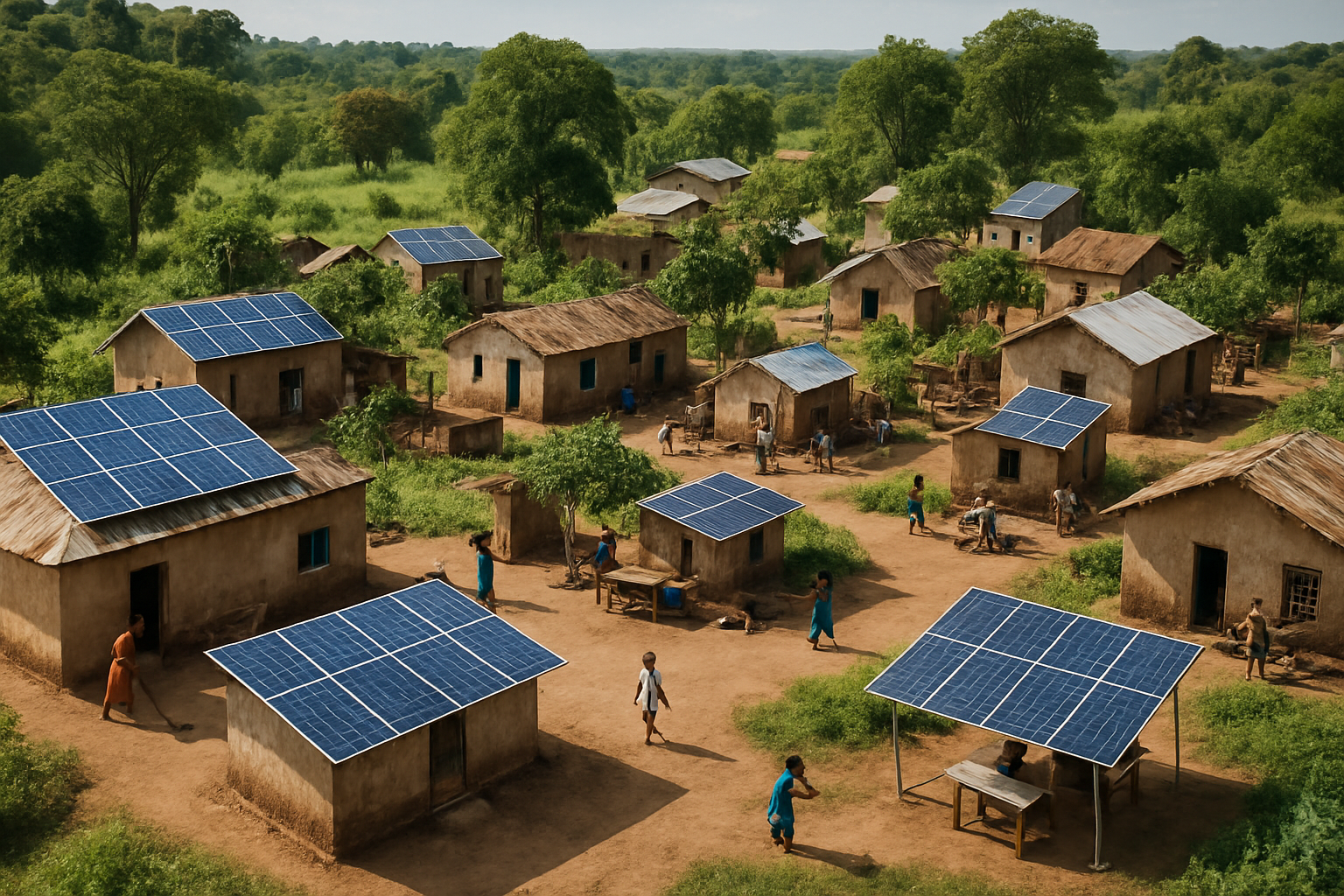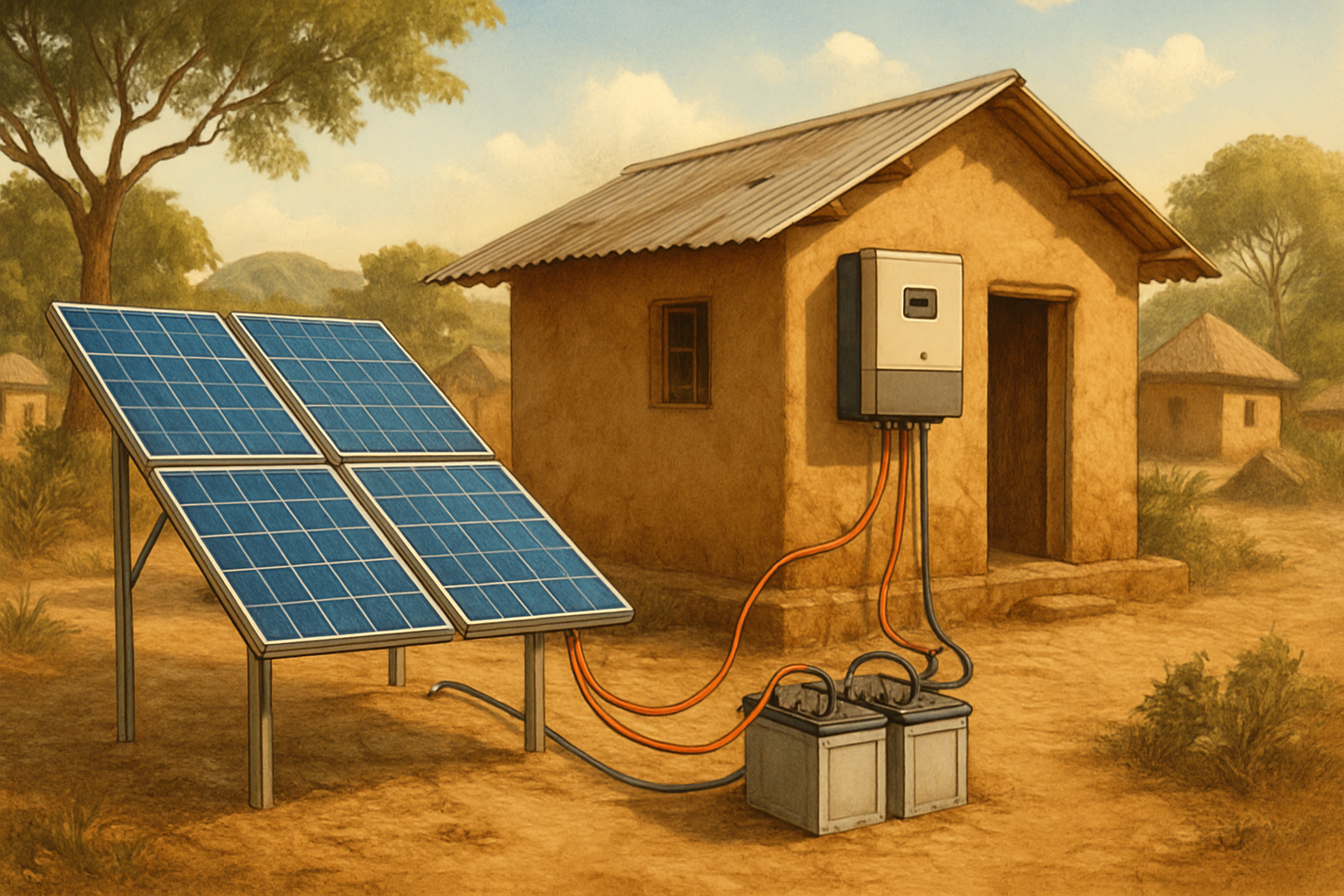Remote communities often lack reliable access to electricity. Off-grid solar mini-grids offer a powerful solution, bringing energy independence and fostering local development. However, tendering for these projects can be complex. Many organizations encounter unexpected expenses, jeopardizing project viability. Identifying and avoiding common cost traps is crucial for successful, sustainable remote solar mini-grid deployment.

Inadequate Resource Assessment and Demand Forecasting
Accurate data forms the foundation of any successful energy project. Overlooking detailed site-specific information or misjudging energy needs can lead to significant cost overruns.
Overlooking Detailed Site Surveys
A superficial understanding of the project site is a common pitfall. This includes insufficient solar irradiance data, unclear terrain conditions, or a lack of geotechnical surveys. Poor site assessment can result in incorrect panel orientations, shading issues, or unforeseen civil engineering challenges, all adding to costs during construction.
Inaccurate Energy Demand Projections
Estimating the energy needs of a remote community requires more than simple averages. Future growth, seasonal variations, and specific appliance usage patterns must be considered. Underestimating demand leads to an undersized system, requiring costly expansions later. Conversely, overestimating demand results in an oversized, expensive system with underutilized capacity. According to the IEA, effective use of centralized forecasts is vital when planning the operation of power plants and electricity flows, a principle equally applicable to mini-grids for accurate sizing.
Suboptimal System Design and Technology Choices
The core components of a solar mini-grid – solar panels, batteries, and inverters – must work together efficiently. Poor design or inappropriate technology selections can severely impact performance and longevity.
Incorrect Sizing of Components
Each component in a mini-grid system needs precise sizing. For instance, an undersized battery bank cannot store enough energy for evening peak demand, while an oversized one represents wasted capital. Similarly, an inverter that cannot handle peak loads will cause system instability. A balanced approach, considering peak load, daily energy consumption, and days of autonomy, is paramount. Our experience in integrated ESS development emphasizes the importance of matching lithium battery capacity with inverter capabilities for optimal performance.
Choosing Unsuitable or Low-Quality Equipment
The allure of lower upfront costs can lead to selecting cheaper, less reliable components. This often results in higher maintenance, frequent replacements, and reduced system lifespan. For instance, while various battery technologies exist, high-performance, safe, and reliable lithium iron phosphate (LiFePO4) batteries offer superior cycle life and depth of discharge compared to some alternatives, leading to lower total cost of ownership. Investing in robust solar panels and efficient solar inverters from reputable manufacturers ensures long-term system stability and reduces operational risks.
Neglecting Operational and Maintenance (O&M) Costs
A mini-grid is a long-term asset requiring continuous care. Ignoring O&M planning can turn a seemingly low-cost tender into an expensive burden.
Poor Long-Term Planning for O&M
O&M costs extend beyond routine checks. They include spare parts inventory, specialized tools, and skilled personnel. A common trap is failing to budget adequately for these ongoing expenses. A well-structured O&M plan should span the entire project lifecycle, often 15-25 years, accounting for degradation rates and potential component failures. The IEA highlights that system operators require real-time production data and remote control capabilities for generators, which necessitates smart-grid hardware and ongoing support.
Lack of Local Technical Capacity
Remote locations often lack skilled technicians. Relying solely on external experts for every issue is costly and slow. Developing local capacity through training programs for basic maintenance and troubleshooting is a strategic investment. This not only reduces O&M expenses but also empowers the community and ensures quicker response times for minor faults.
Underestimating Regulatory and Permitting Hurdles
Navigating the administrative landscape for remote mini-grid projects can be surprisingly complex and time-consuming.
Complex Local Regulations and Bureaucracy
Each region may have unique permitting requirements, environmental assessments, and land acquisition processes. These can be opaque, change frequently, and involve multiple government agencies. Failing to thoroughly research and account for these regulatory complexities can lead to significant delays and unexpected fees. The EERE notes that non-hardware costs, such as permitting and interconnection, can comprise a substantial portion of the total price for solar energy systems.
Unexpected Delays and Fees
Permit applications can take months, sometimes years, to process. Each delay pushes back project completion, increasing financing costs and potentially impacting equipment warranties. Furthermore, various unforeseen fees, levies, or taxes might emerge during the process. A robust tender submission should include a realistic timeline and budget buffer for these administrative challenges.
Flawed Financial Modeling and Contractual Terms
The financial structure and contractual agreements are the backbone of any project. Errors here can undermine the entire venture.
Inaccurate Financial Projections
Financial models must be comprehensive, considering capital expenditures (CAPEX), operational expenditures (OPEX), financing costs, revenue streams, and inflation. Overly optimistic projections for energy sales or underestimating discount rates can lead to a financially unsustainable project. Sensitivity analyses, testing various scenarios, provide a more realistic view of financial viability.
Unfavorable Contractual Agreements
The terms and conditions of a tender contract can hide significant risks. This includes unclear clauses on force majeure, performance guarantees, liquidated damages, and dispute resolution mechanisms. Poorly negotiated power purchase agreements (PPAs) or concession agreements can also expose the project to revenue shortfalls or undue liabilities. Thorough legal review is not an option; it is a necessity.
Building Resilient Remote Solar Mini-Grids
Avoiding these seven cost traps requires meticulous planning, deep technical understanding, and a forward-looking perspective. By prioritizing detailed assessments, robust system design, comprehensive O&M strategies, careful navigation of regulations, and sound financial modeling, you can ensure the long-term success and affordability of remote solar mini-grid projects. Our commitment to reliable and scalable energy solutions aims to help communities achieve true energy independence.
Frequently Asked Questions
How can I ensure accurate energy demand forecasting for a remote community?
Begin with a baseline study of current energy consumption, if any, and conduct surveys to understand appliance ownership and usage patterns. Project future demand by considering population growth, economic development, and potential for new loads. Employ statistical methods and engage with community leaders for realistic insights. The IEA emphasizes the importance of using centralized forecasts for effective planning.
What are the key considerations when selecting battery technology for a remote mini-grid?
Key considerations include cycle life, depth of discharge, energy density, safety features, operating temperature range, and total cost of ownership. For many remote applications, lithium iron phosphate (LiFePO4) batteries offer an excellent balance of performance, safety, and longevity, making them a reliable choice for long-term storage.
How can small organizations manage complex permitting processes in remote areas?
Engage local consultants with experience in the specific region's regulatory environment. Build relationships with local authorities early in the project lifecycle. Allocate sufficient time and budget for the permitting phase, recognizing that it can be unpredictable. The EERE highlights that streamlining permitting can significantly reduce overall project costs.





Leave a comment
All comments are moderated before being published.
This site is protected by hCaptcha and the hCaptcha Privacy Policy and Terms of Service apply.